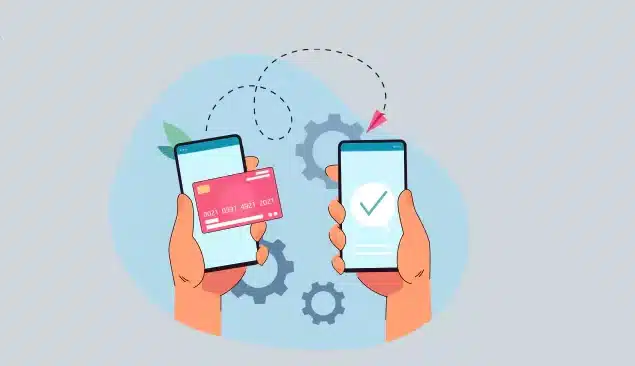As mobile technology continues to advance, the landscape of payment systems within app frameworks is rapidly evolving. From the simplicity of in-app purchases to the complexity of secure transactions, the integration of mobile payment solutions has become a crucial component for app developers and users alike.
However, as this evolution unfolds, challenges such as security and user experience must be addressed to ensure the seamless operation of these systems. Stay tuned as we explore the intricate web of mobile payment systems and their impact on the app development ecosystem.
The Rise of Mobile Payment Solutions in App Development
Mobile payment solutions have become integral to the landscape of app development, offering convenience and efficiency to users.
One key aspect driving their rise is the focus on enhancing security measures within these platforms to safeguard sensitive financial information.
As developers continue to prioritize secure payment systems, the evolution of mobile payment frameworks is set to reshape the way transactions are conducted in the digital realm.
Enhancing Security in Mobile Payment App Frameworks
Security is paramount in mobile payment app frameworks, particularly when integrating payment gateways. Ensuring secure transactions and protecting sensitive user data are top priorities for developers.
Payment Gateway Integration in Mobile App Frameworks
Payment gateway integration in mobile app frameworks enhances the overall user experience by providing a seamless and secure transaction process. Trusted payment gateways ensure convenient payment experiences for users while maintaining robust security measures to safeguard sensitive financial information. This integration not only enhances user trust but also boosts satisfaction in mobile payment systems.
Having a well-integrated payment gateway in a mobile app framework is essential for ensuring a positive user experience and transaction security. By incorporating trusted payment gateways, developers can offer users a seamless and secure payment process while safeguarding sensitive financial information. This integration helps in enhancing user trust and satisfaction in mobile payment systems.
Understanding the Impact of Mobile Payment Security
Mobile payment security is paramount in today’s digital landscape, with hackers constantly seeking vulnerabilities to exploit.
The integration of AI in mobile payment solutions has significantly bolstered security measures, providing real-time threat detection and prevention.
Understanding how AI enhances security in mobile payments is crucial for app developers and businesses looking to safeguard sensitive financial information.
The Role of AI in Mobile Payment Solutions
Artificial intelligence plays a pivotal role in enhancing the efficiency and reliability of modern mobile payment systems. AI algorithms are utilized to detect fraudulent activities by analyzing user behavior patterns, transaction histories, and location data in real-time. These sophisticated algorithms can flag unusual or suspicious transactions promptly, reducing the risk of unauthorized access and fraudulent transactions.
Moreover, AI-powered systems can provide personalized security features such as biometric authentication, ensuring secure and seamless payment experiences for users. By continuously learning from new data and adapting to evolving threats, AI strengthens the overall security posture of mobile payment solutions, safeguarding sensitive financial information and enhancing trust among users.
The integration of AI in mobile payment systems represents a significant advancement in mitigating security risks and ensuring safe transactions.

Mobile Payment Solutions: Integrating with App Frameworks
Integrating mobile payment solutions with app frameworks has become essential for providing seamless and secure transactions in today’s digital landscape. As more consumers rely on mobile devices for various transactions, the need for a convenient and secure payment method within apps has grown significantly. By integrating mobile payment solutions directly into app frameworks, developers can offer users a streamlined and efficient way to make purchases, whether it’s for physical goods, services, or digital products.
One of the key advantages of integrating mobile payment solutions with app frameworks is the enhanced user experience it provides. Instead of redirecting users to external websites or third-party payment platforms, the ability to complete transactions within the app itself creates a more cohesive and seamless process. This not only saves time for users but also helps build trust and credibility for the app and the brand behind it.
Furthermore, integrating mobile payment solutions with app frameworks can also improve security measures. By leveraging built-in security features of app frameworks and implementing encryption techniques, developers can ensure that sensitive payment information is protected from potential cyber threats. This added layer of security is crucial in gaining user trust and encouraging more frequent transactions within the app.
Advancements in Mobile Payment Technologies for Apps
The evolution of mobile payment technologies for apps has led to significant advancements, particularly in the realm of cross-platform compatibility. This development allows users to seamlessly make payments across various devices and operating systems, enhancing convenience and accessibility.
Embracing this innovation can empower businesses to cater to a wider audience and streamline their payment processes.
Cross-Platform Compatibility in Mobile Payment Apps
Ensuring cross-platform compatibility in mobile payment apps is crucial for reaching a wider user base and enhancing user experience.
However, challenges may arise in implementing these solutions due to differences in operating systems, hardware, and security protocols.
Overcoming these obstacles requires innovative technologies and strategic planning to ensure seamless payment transactions across various platforms.
Challenges in Implementing Mobile Payment Solutions
Navigating the complex landscape of mobile payment technologies poses significant challenges for developers aiming to achieve cross-platform compatibility in their payment apps. Interoperability issues across different operating systems, varying security protocols, and compliance with diverse regulatory frameworks are key hurdles.
Additionally, ensuring seamless integration with a wide range of payment gateways and methods while maintaining a user-friendly experience further complicates the implementation of mobile payment solutions.
Future Trends: Mobile Payment Systems and User Experience
As mobile payment systems continue to evolve, a key focus area is enhancing the user experience through innovative user interface design.
The future trends in mobile payment systems are shifting towards creating seamless and intuitive interfaces that prioritize user convenience and security.
User Interface Design for Mobile Payment Systems
As mobile payment systems continue to evolve, the user interface design plays a crucial role in enhancing user experience. Future trends in mobile payment systems prioritize seamless and secure transactions, emphasizing the importance of user-friendly interfaces.
Analyzing the effectiveness of mobile payment security is essential for ensuring trust and confidence among users.
Analyzing the Effectiveness of Mobile Payment Security
Effectively securing mobile payment transactions is paramount in ensuring the trust and safety of users in the evolving landscape of digital financial transactions.
With the increasing prevalence of mobile payments, the need for robust security measures to protect sensitive data and prevent fraud is more critical than ever.
Implementing encryption, tokenization, multi-factor authentication, and biometric verification are some of the strategies employed to enhance the security of mobile payment systems.

Conclusion
In conclusion, the evolution of mobile payment systems within app frameworks has significantly transformed the way businesses and consumers engage in financial transactions.
With the rise of mobile payment solutions, the emphasis on security and integration with app frameworks has become paramount.
Advancements in technology continue to drive innovation in mobile payment systems, enhancing user experience and paving the way for future trends in the industry.
How Do Mobile Payment Systems Within App Frameworks Impact the Overall User Experience of an App?
Mobile payment systems within app frameworks significantly impact the overall user experience by providing convenience, security, and seamless transactions. These systems streamline the payment process, enhance user trust, and contribute to higher user satisfaction levels.
What Are the Key Challenges Faced When Integrating Mobile Payment Solutions With App Frameworks?
Integrating mobile payment solutions with app frameworks presents challenges such as security concerns, compatibility issues, user experience optimization, and regulatory compliance. Overcoming these hurdles requires careful planning, collaboration between developers and payment providers, and continuous testing.
How Do Advancements in Mobile Payment Technologies for Apps Affect the Security of User Data?
Advancements in mobile payment technologies for apps significantly impact the security of user data. These advancements introduce robust encryption methods, tokenization, biometric authentication, and secure data transmission protocols, enhancing the overall security framework to safeguard sensitive user information.


